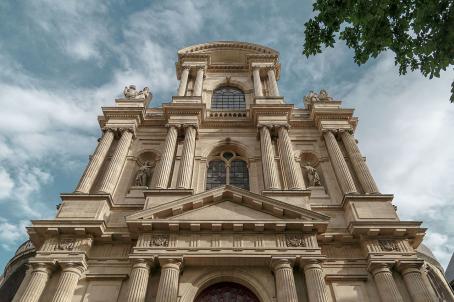Church of Saint-Louis-en-l'Île

The Saint-Louis-en-l'Île church is a French church located on the island of Saint-Louis. The construction of the building was spread out in several stages from 1624 to 1726.
About this building
In 1623, at the request of the first inhabitants, the cathedral chapter had a chapel built, with its choir facing south. In 1642, in view of the rapid increase in the island's population, it was decided to destroy the old church, which had become too small, and to build a larger parish church instead. The architect François Le Vau was in charge of drawing up the plans for the new church. This time, the new church will normally face east. The first stone of the choir was laid on 1 October 1664 by the Archbishop of Paris, Hardouin de Péréfixe, and the altar was consecrated on 20 August 1679 by François de Harlay. Le Vau died in 1676 and the choir was finished by Gabriel Le Duc. Initially, the choir was connected by an unfinished transept to the old church in order to serve as a temporary nave. On February 2, 1701, a storm destroyed the roof of the old building, injuring and killing many of the faithful. It is therefore imperative to complete the new church as soon as possible. Pierre Bullet, then Jacques Doucet, was responsible for continuing the work on the nave, from 1702 to 1723 and the transept with the dome in 1725.
A bell tower stood at the crossroads of the transept. Destroyed by lightning in 1740, it was replaced in 1765 by the current bell tower, thirty metres high. Closed in 1791, it was planned to be razed to the ground, but its purchase by the City of Paris in 1817 and its subsequent restoration saved it.





